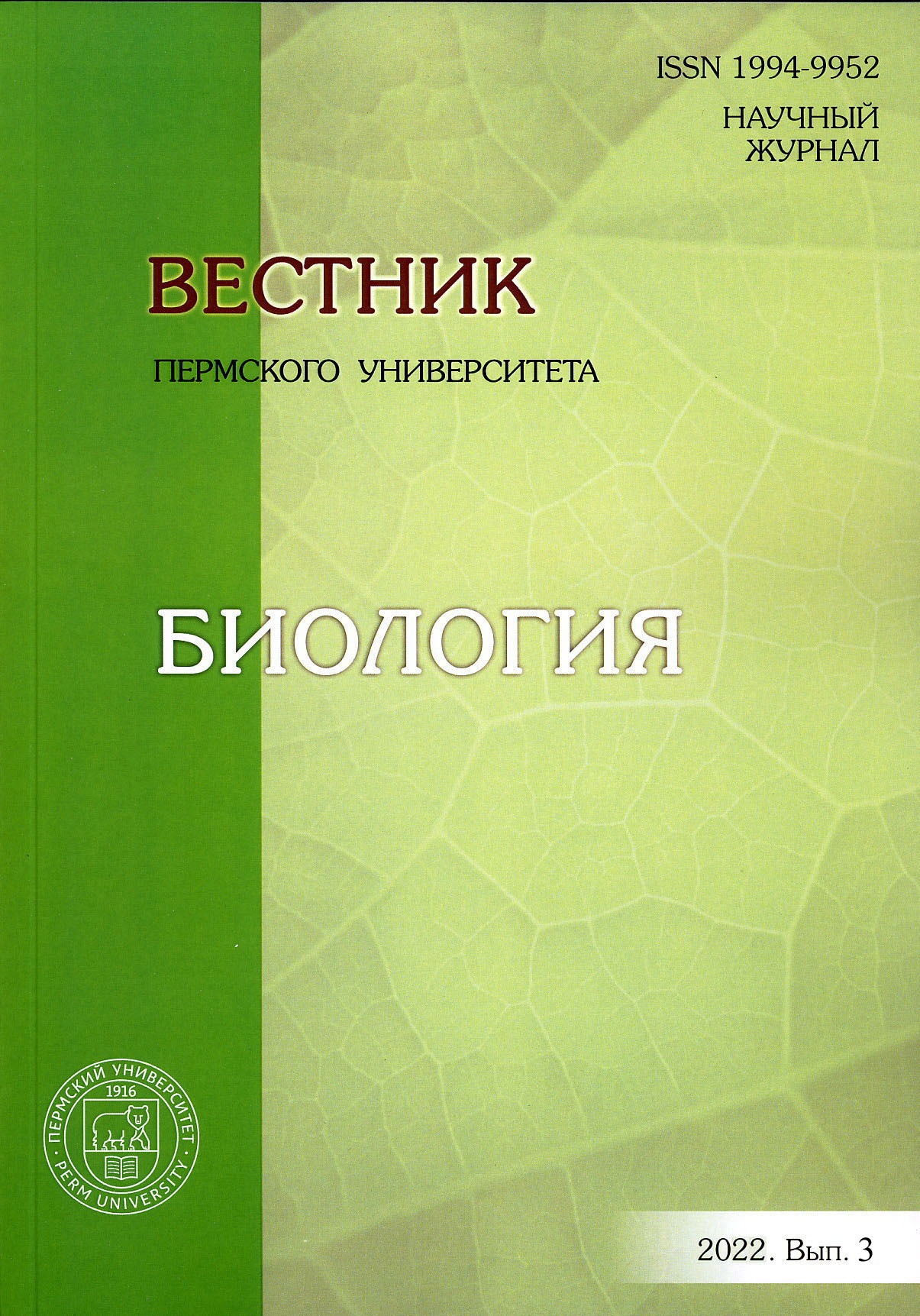Изучение влияния лецитина и глюкозы на ростовые свойства штаммов Streptococcus pneumoniae
##plugins.themes.bootstrap3.article.main##
Аннотация
##plugins.themes.bootstrap3.article.details##
Лицензионный договор на право использования научного произведения в научных журналах, учредителем которых является Пермский государственный национальный исследовательский университет
Текст Договора размещен на сайте Пермского государственного национального исследовательского университета http://www.psu.ru/, а также его можно получить по электронной почте в «Отделе научных периодических и продолжающихся изданий ПГНИУ»: YakshnaN@psu.ru или в редакциях научных журналов ПГНИУ.
Библиографические ссылки
Кветная А.С., Железова Л.И. Стимулирующее влияние фосфотидилхолина (лецитина) на патогенные свойства пневмококка // Ученые записки Санкт-Петербургского государственного медицинского университета им. акад. И.П. Павлова. 2014. Т. 21, № 1. C. 48‒51. doi: 10.24884/1607-4181-2014-21-1-48-51.
Лабораторная диагностика внебольничной пневмонии пневмококковой этиологии: метод. рекомендации. М.: Федеральная служба по надзору в сфере защиты прав потребителей и благополучия че-ловека, 2017. 64 с.
Маянский Н.А. и др. Серотиповое разнообразие и резистентность пневмококков // Вестник Российской академии медицинских наук. 2014. Т. 69, № 7‒8. С. 38‒45. doi: 10.15690/vramn.v69i7-8.1108.
Микробиология: возбудители бактериальных воздушно-капельных инфекций / под общ. ред. Л.И. Кафарской. М.: Юрайт, 2020. 115 с.
Сидоров Н.Г., Поддубиков А.В. Видоспецифические антигены Streptococcus pneumoniae как перспектива создания диагностических средств // Инфекционные болезни. 2021. T. 19, № 4. С. 73‒78. doi: 10.20953/1729-9225-2021-4-73-78.
Agnew H.N. et al. Streptococcus pneumoniae strains isolated from a single pediatric patient display dis-tinct phenotypes // Frontiers in Cellular and Infection Microbiology. 2022. Vol. 12. Article 866259. doi: 10.3389/fcimb.2022.866259.
Bärland N. et al. Mechanistic basis of choline import involved in teichoic acids and lipopolysaccharide modification // Science Advances. 2022. Vol. 8(9). Article eabm1122. doi:10.1126/sciadv.abm1122.
Brooks L.R.K., Mias G.I. Streptococcus pneumoniae's virulence and host immunity: Aging, diagnostics, and prevention // Frontiers in Immunology. 2018. Vol. 9. Article 1366. doi:10.3389/fimmu.2018.01366.
Chen H.H. et al. Non-typeable Streptococcus pneumoniae infection in a medical center in Taiwan after wide use of pneumococcal conjugate vaccine // Journal of Microbiology, Immunology and Infection. 2020. Vol. 53(1). P. 94‒98. doi:10.1016/j.jmii.2018.04.001.
Denapaite D. et al. Biosynthesis of teichoic acids in Streptococcus pneumoniae and closely related spe-cies: lessons from genomes // Microbial Drug Resistance. 2012. Vol. 18(3). P. 344‒358. doi: 10.1089/mdr.2012.0026.
Ing J. et al. Characterization of nontypeable and atypical Streptococcus pneumoniae pediatric isolates from 1994 to 2010 // Journal of Clinical Microbiology. 2012. Vol. 50(4). P. 1326‒1330. doi:10.15690/10.1128/jcm.05182-11.
Jacques N.A. et al. Effect of carbohydrate source and growth conditions on the production of lipo-teichoic acid by Streptococcus mutans Ingbritt // Infection and Immunity. 1979. Vol. 26(3). P. 1079‒1087. doi:10.1128/iai.26.3.1079-1087.1979.
Jia J. et al. Identification and molecular epidemiology of routinely determined Streptococcus pneumoni-ae with negative Quellung reaction results // Journal of Clinical Laboratory Analysis. 2022. Vol. 36(4). Article 24293. doi: 10.1002/jcla.24293.
Keller L.E., Robinson D.A., McDaniel L.S. Nonencapsulated Streptococcus pneumoniae: Emergence and pathogenesis // mBio. 2016. Vol. 7(2). Article e01792. doi:10.1128/mBio.01792-15.
Luck J.N., Tettelin H., Orihuela C.J. Sugar-Coated Killer: Serotype 3 pneumococcal disease // Frontiers in Cellular and Infection Microbiology. 2020. Vol. 10. Article 613287. doi: fcimb.2020.613287.
Maestro B., Sanz J.M. Choline binding proteins from Streptococcus pneumoniae: A dual role as enzybi-otics and targets for the design of new antimicrobials // Antibiotics (Basel). 2016. Vol. 5(2). Article 21. doi:10.3390/antibiotics5020021.
Magomani V. et al. Challenges of using molecular serotyping for surveillance of pneumococcal disease // Journal of Clinical Microbiology. 2014. Vol. 52(9). Article 3271-6. doi: 10.1128/JCM.01061-14.
Masomian M. et al. Development of Next Generation Streptococcus pneumoniae Vaccines Conferring Broad Protection // Vaccines (Basel). 2020. Vol. 8(1). Article 132. doi: 10.3390/vaccines8010132.
Oktari A. et al. The optimization of Human Blood Agar (HBA) for Streptococcus pneumonia growth // Journal of Physics Conference Series. 2019. Vol. 1280(2). Article 02200. doi: 10.1088/1742-6596/1280/2/022002.
Varghese R., Jayaraman R., Veeraraghavan B. Current challenges in the accurate identification of Strep-tococcus pneumoniae and its serogroups/serotypes in the vaccine era // Journal of Microbiological Methods. 2017. Vol. 141. P. 48‒54. doi: 10.1016/j.mimet.2017.07.015.




